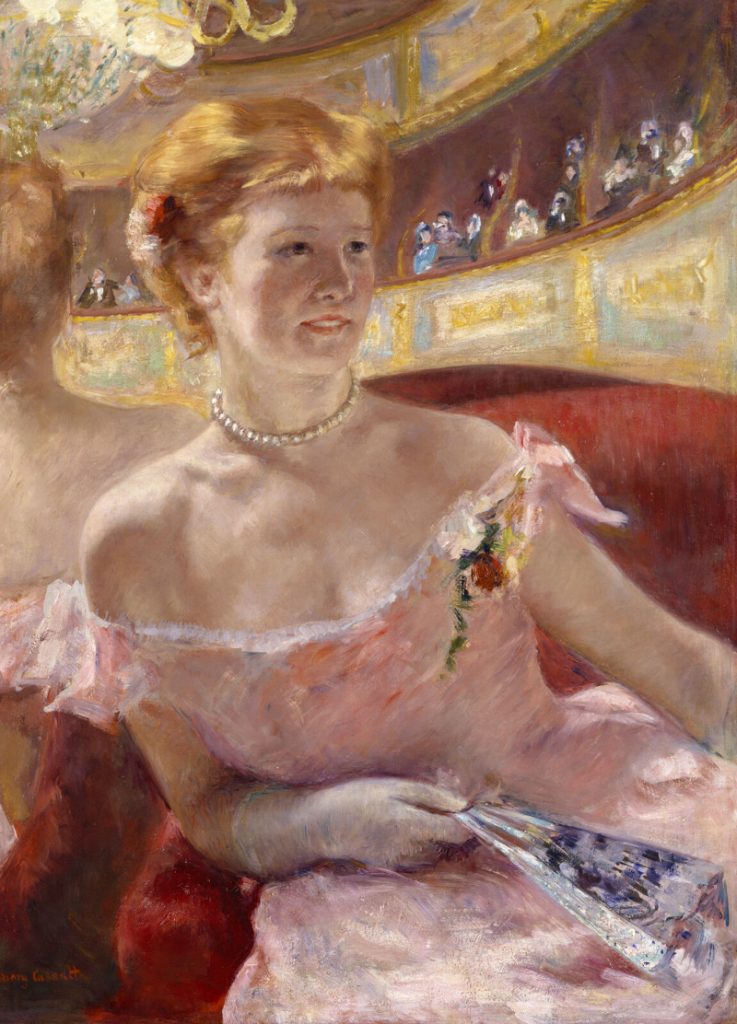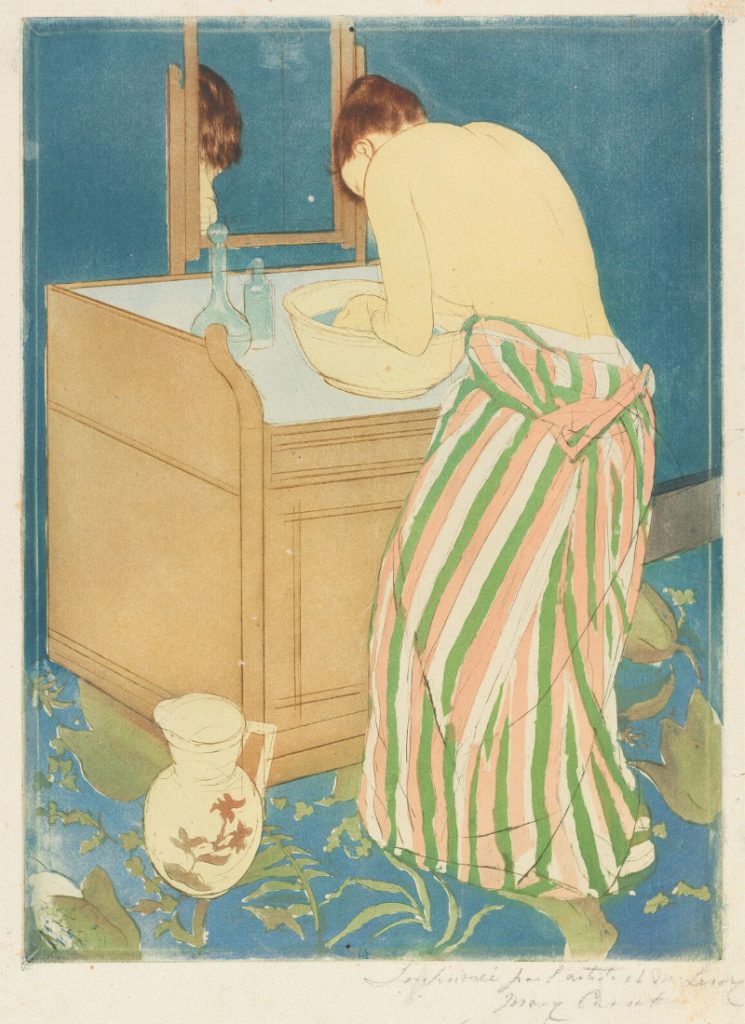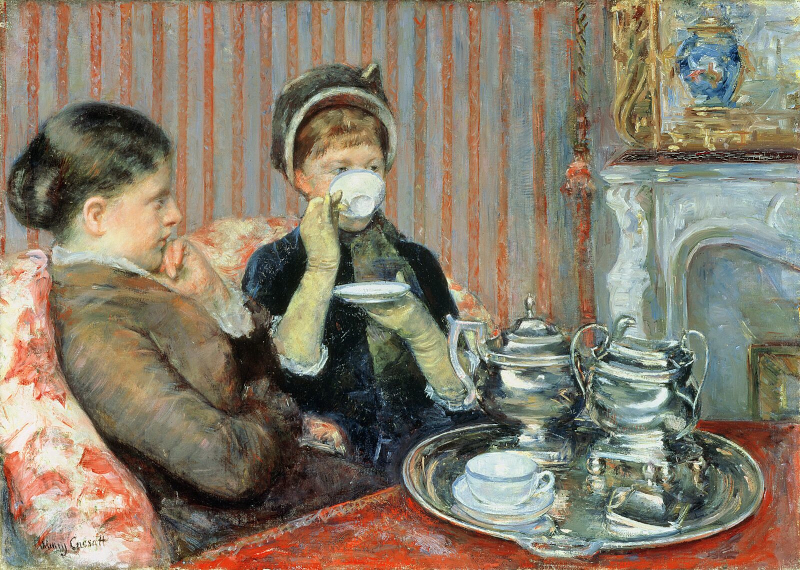Director – Ali Ray – 2023 – UK – Cert. U – 93m
*****
A look at an often overlooked member of the Impressionists, a US-born, female painter and printmaker who moved from Philadelphia to live in France – out in UK cinemas for one day only on Wednesday, March 8th (International Women’s Day)
I had never heard of Mary Cassatt when I came to this documentary. I’m not really sure why not (apart from the obvious reason, the widespread exclusion of numerous women artists from the annals of art history until recently) and feel indebted to this remarkable study for introducing me to her work. It comes as no surprise that the film was produced by Phil Grabsky for his excellent Exhibition On Screen series about art, although what IS a surprise here is that all the interviewees in this instance are women. Nothing at all wrong with that if they have something of value to say, which they clearly do.
One could argue that the piece has a very strong feminist leaning with its emphasis on women being free to live their lives as they choose. It’s tempting to say that one could forget the gender bias here and simply say that all the interviewees have important insights to share and do a good job. The film is receiving a one day cinema release for International Women’s Day, which is a shrewd move.
What is undeniable is that those insights are feminine – which, in this instance, is curiously refreshing. Cassatt is described early on as a difficult artist who frustrates many people by a commentator who wants to understand that frustration. Elsewhere, the artist is cited as saying: “women should be someone not something”, a concept which (although this documentary misses a major coup by failing to express it in these terms) is in line with the idea of art not being subject to ‘the male gaze’, a situation in which the widespread Western tradition of the female nude often painted by male artists for male patrons often finds itself.

There are two major strands to Cassatt’s achievements in life. The film focuses on her painting and printmaking practice, which is fair enough because that’s what the Exhibition On Screen series is about. However, because she was well-heeled, being born to a self-made, wealthy US family, she moved in the company of those who were likewise well off.
She exploited this situation by playing a huge role in advising American art collectors to buy Impressionists and older masters, and did much to encourage the growth of what subsequently became American art museums. It’s pointed out that in effect, she had two careers – one as a major painter / printmaker, and one as a key catalyst in the formation of public American art collections. Both paths are highly significant.
Privileged she may have been, but her gender restricted her artistic career opportunities in the US. As a mid-nineteenth century teenager, she enrolled in the Pennsylvania Academy Of Fine Arts, Philadelphia, but grew increasingly frustrated with the city’s rigid lack of opportunity for women artists and at age 21 moved to Paris, France with her mother. She would make daily visits to The Louvre to absorb the work of the Old Masters there, as did other women hopefuls. The object was to get a painting into the annual spring Salon. Or, when that show became criticised for being too conservative, the Salon Des Refusés (which was financially supported by Napoleon III) and in 1863 shocked visitors with Manet’s Dejeuner Sur L’Herbe.
In 1867, Cassatt moved out to the small village of Ecouen, North of Paris where she was involved in an artists’ community, but got out three years later at the start of the Franco-Prussian War, returning to Philadelphia. Work was scarce, but she did manage to get a commission from a priest to copy a Correggio painting in Parma, which involved travelling to Italy. Here she painted Two Women Throwing Flowers In Carnival (1872) which absorbs influences as diverse as Carravaggio and Manet. She moved on to Spain and settled in Seville, where her On The Balcony (1873), a picture of two women one of whom is flirting with a man, shows her commenting on gender dynamics and the sometimes uncomfortable elements of the female experience.
In 1874, she returned to Paris where she would remain until her death. Eventually, she and Edgar Degas discovered each other’s work then fell in with each other. Soon, she was exhibiting with the radically-minded Impressionists rather than the more conservative Salon. Yet the public didn’t much care for the Impressionist exhibitions with their everyday rather than classically elevated subject matter.
1877 saw her parents and sister move from Philadelphia to Paris. Degas, her and her sister Lydia would hang out and spend time in the evening at the theatre. These resulted in a number of paintings by Cassatt showing women at the theatre, seeing the performance and being seen by others, Woman In A Pearl Necklace In A Loge (1879), for which the model is in all likelihood Lydia, plays with space and mirrors in a manner foreshadowing Manet’s celebrated A Bar At The Folies-Bergère (1882).

She then took to printmaking under a proposed scheme by Degas that never reached fruition. Her own prints for it though pushed the boundaries of the medium and proved highly saleable: a great success. This provides the perfect excuse for the film to showcase the etching process, first drypoint then aquatint (for the benefit of those who don’t know these processes) with footage featuring the present day artist Bronwen Bradshaw.
The final Impressionist Show (1888) saw the group searching for a new style, with the likes of Cézanne, Van Gogh and Gauguin.
Girl Arranging Her Hair (1886) and Denise At Her Dressing Table (1988-9) show Cassatt approaching the subject of woman at toilette or coiffure, well-worn subjects in Western art which tended to be painted by men and as a result heavily sexualised with lots of flesh on display. However, Cassatt, being a woman, takes an entirely different approach. She’s interested not in titillation as many of her male counterparts would be, but via composition and colour in a sort of quiet, relaxing composure.

Cassatt became smitten with Japanese woodblock prints showing at the Musée Des Beaux-Arts, which inspired her to produce, using not woodblocks but aquatint etching, a remarkable series of her own prints depicting matter-of-fact images of the everyday lives of modern French women.
She went on to do mother and child paintings which were so successful in their day (and continue to be in reproduction on mother’s day cards and so forth today) that she became a victim of her own success with the images eclipsing the breadth of images found in the rest of her work.
Her role both as an artist in France and in the growth of art collections and museums in the US are worthy of attention: kudos to the filmmakers for this timely look at her work in both spheres.
Mary Cassatt; Painting The Modern Woman is out in cinemas in the UK for one day only on Wednesday, March 8th (International Women’s Day).
Trailer:
